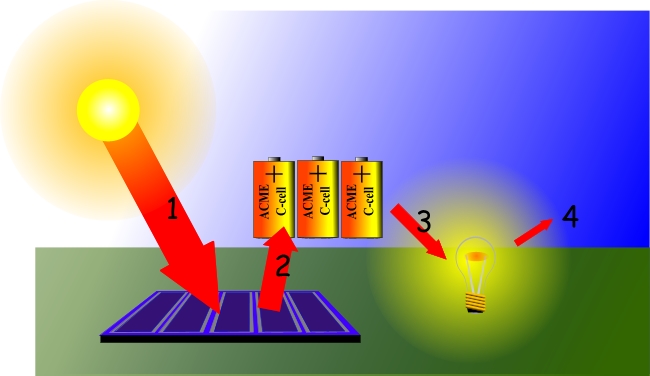

- Chemical potential energy transformed into radiant energy professional#
- Chemical potential energy transformed into radiant energy windows#
Energy is neither created nor destroyed but simply transformed from one form to another.

In the living cells, the food molecules are subjected to chemical reactions and the potential energy in the molecules change into heat, light, motion or some other kinetic energy. From simple inorganic compounds, plants can synthesize highly complex organic compounds, such as carbohydrates, fats and proteins and a considerable amount of energy is stored in these molecules. The radiant (kinetic) energy is transformed into chemical (potential) energy, which is stored in carbohydrate molecules. Light is absorbed in the chlorophyll pigment and transformed by the cells into the chemical energy needed for the synthesis of carbohydrate. And the children can feel the heat as it gets converted into thermal energy.Įnergy is everywhere and in every part of our lives.In the process, carbon dioxide and water are joined by using sunlight as a source of energy. The rubbing is an example of mechanical energy.

The disc brake in the automobile generates heat due to friction. To demonstrate energy transformation, get children to rub their hands together. The application of brake is good example of radiant energy to potential energy. It can only be changed into different forms. Hence, the statement 'Digested food is a source of potential energy' is the best explanation. Energy Transformations Plants capture light energy from the sun and convert it into chemical energy during the process of photosynthesis. That’s when the kinetic energy of the ball applies a force on the building, which can cause it to fall down.Įnergy cannot be created or destroyed. The digestion involves the breakage of atomic bond which is stored in the form of chemical energy (type of potential energy). Eventually, the ball comes in contact with a wall. As it swings toward the building, the energy is transformed into kinetic energy. It has potential energy because it is held up in the air. Think of a wrecking ball demolishing a building.

In other words, it does work on the object. This stored energy can be used to apply a force to another object. Energy, Life, and the Laws of Thermodynamics. In this chapter, these funda- mental laws. The faster an object moves, the more energy it stores. chemical and physical laws that operate everywhere in the universe. Some everyday examples of potential energy include the energy of water held behind a dam, or of a person about to skydive out of an airplane.
Chemical potential energy transformed into radiant energy windows#
Wrecking ball smashing into some windows (Source: ShooteRhys via iStockphoto). In physics, and in particular as measured by radiometry, radiant energy is the energy of electromagnetic 1 and gravitational radiation. Chemical energy, the energy stored in chemical bonds, is thus considered a form of potential energy.
Chemical potential energy transformed into radiant energy professional#
Open Professional Learning × Close Professional Learning Potential energy is determined by the given formula. Potential energy can transform into a more obvious form of kinetic energy. Chemical potential energy is a form of potential energy related to the structural arrangement of atoms or molecules. Open Educational Resources × Close Educational Resources There are several types of energy, including thermal energy, radiant energy, chemical energy, nuclear energy, electrical energy, sound energy, elastic energy and so on.


 0 kommentar(er)
0 kommentar(er)
